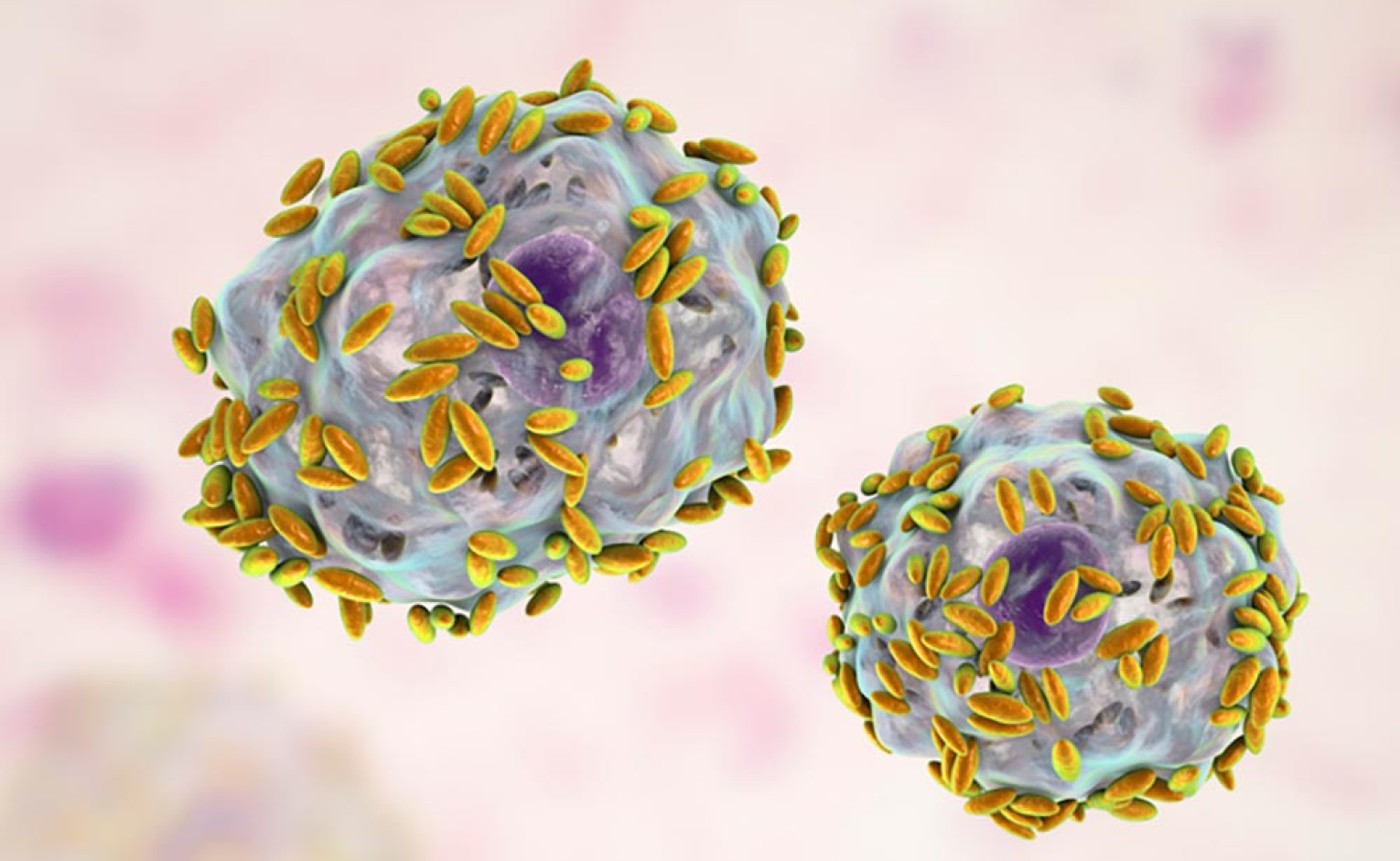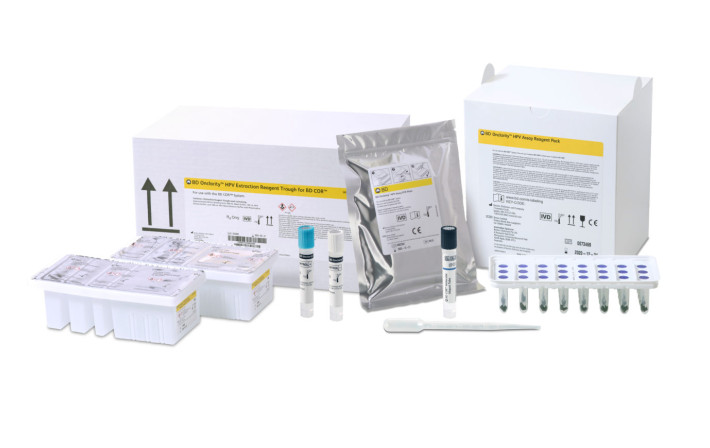Press release: New study shows substandard approaches to diagnosis and treatment for vaginal discharge syndromes

Four of every ten women received inappropriate treatment
FRANKLIN LAKES, N.J., October 6, 2020 – BD (Becton, Dickinson and Company) (NYSE: BDX), a leading global medical technology company, announced the publication of an investigator-initiated study funded by BD Life Sciences - Integrated Diagnostics Solutions in the journal, Clinical Infectious Diseases (CID). The study was performed to assess how effectively women with vaginal discharge syndromes or vaginitis were being evaluated in community practice settings and to determine the appropriateness of the treatments prescribed for vaginitis.
Although vaginitis is a common condition, diagnosis of its usual causes1,2 (bacterial vaginosis [BV], vulvovaginal candidiasis [VVC], or Trichomonas vaginalis [TV]) in women of reproductive age is not standardized. Approximately 75% of women will experience at least one episode of vaginitis that requires treatment during their lifetime3.
Approximately 300 women in this study, presenting with vaginitis-consistent symptoms, were evaluated at community-based practices and had reference lab testing performed (reference lab testing was considered clinical “truth” for diagnostic purposes in this study). Based on the results from the reference lab testing, 47% of the 170 women with vaginitis received inappropriate treatment following their office-based visit. Overall, 40% of the 300 female participants were prescribed antifungals and/or antibiotics inappropriately.
Empiric treatment—a therapeutic approach based on clinical judgement with incomplete information on the patient’s condition—is often considered harmless for a patient with these types of symptoms. However, this study found that one out of every five women that received a prescription based on clinical findings from their office visit, but did not have a reference lab-confirmed diagnosis of vaginitis, returned for repeat symptoms of vaginitis in the subsequent 90 days. The study concluded that diagnostic accuracy and appropriateness of treatment at community-based practices for women with symptoms of vaginitis could be improved.
Despite a broad knowledge of the conditions associated with vaginitis, clinical diagnosis remains a significant challenge, with many clinicians believing that vaginal infections can be diagnosed by patient history and symptoms alone4. As a result, research has shown that up to 40% of women are estimated to leave their initial physician visit without a proper vaginitis diagnosis5.
“This study documents how infrequently CDC-recommended point of care testing such as assessment of vaginal pH, microscopic examination of vaginal fluid, or the “whiff” test are performed when women present with vaginal symptoms in primary women’s health care settings,” said Dr. Sharon Hillier of the University of Pittsburgh and Magee-Women’s Research Institute and corresponding author of the study.
In a CID editorial commentary, Dr. Jack D. Sobel of Wayne State University School of Medicine, cites the recent publication as “a call to action” against the syndromic treatment of women with vulvovaginal symptoms in the United States6. The commentary pleads with the healthcare community to seek the correct diagnoses and avoid empiricism as it pertains addressing women presenting with vulvovaginal complaints, which were common in community practice.
“Women who seek care and treatment for vaginitis symptoms deserve the best care possible and that ultimately begins with improved diagnostic accuracy,” concluded Molly Broache, BSN, MSN, WHNP, Medical Science Liaison with BD. “Overall, the research suggests that the current diagnostic approach for management of vaginal discharge syndromes provides insufficient care for a substantial proportion of women.”
For independently-developed continuing medical education (CME) activities pertaining to this topic, please visit www.omniaeducation.com.
References:
1. Koumans EH, Sternberg M, Bruce C, et al. The prevalence of bacterial vaginosis in the United States, 2001-2004: associations with symptoms, sexual behaviors, and reproductive health. Sexually Transmitted Diseases. 2007;34:864–9.
2. Sutton M, Sternberg M, Koumans EH, et al. The prevalence of Trichomonas vaginalis infection among reproductive-age women in the United States, 2001-2004. Clinical Infectious Diseases. 2007;45:1319–26.
3. Yano J, Sobel JD, Nyirjesy P, et al. Current patient perspectives of vulvovaginal candidiasis: incidence, symptoms, management and post-treatment outcomes. BMC Womens Health. 2019;19(1):48.
4. Sobel JD, Akins RA. The Role of PCR in the Diagnosis of Candida Vulvovaginitis—a New Gold Standard? Current Infectious Disease Reports. 2015;17(6). doi:10.1007/s11908-015-0488-3
5. Carr PL, Rothberg MB, Friedman RH, Felsenstein D, Pliskin JS. “Shotgun” versus sequential testing. Cost-effectiveness of diagnostic strategies for vaginitis. Journal of General Internal Medicine. 2005;20(9):793-799. doi:10.1111/j.1525-1497.2005.0188.x
6. Sobel JD. Syndromic Treatment of Women With Vulvovaginal Symptoms in the United States: A Call to Action! Clinical Infectious Diseases. 2020. doi:10.1093/cid/ciaa267
About the BD MAX™ Vaginal Panel
The BD MAX Vaginal Panel was market authorized as an in vitro diagnostic in October 2016 and it is utilized on the BD MAX System. The assay detects microorganisms responsible for Bacterial Vaginosis (BV), Trichomoniasis (TV) and Vulvovaginal Candidiasis (VVC), also known as a yeast infection, which are the most common infectious causes of vaginitis.1,2,3 The in vitro diagnostic (IVD) assay is the first multiplex, real-time polymerase chain reaction (PCR) assay authorized by FDA for the detection of microorganisms responsible for both vaginitis and vaginosis in women that exhibit symptoms of vaginal infections. BV diagnosis is challenging, as it is caused by bacterial imbalances in the vagina. To address this challenge, the BD MAX Vaginal Panel has a unique algorithm that determines the ratio of healthy versus unhealthy bacteria, improving BV diagnosis.
About the BD MAX™ System
The BD MAX System is a fully integrated, automated platform that performs nucleic acid extraction and real-time polymerase chain reaction (PCR), providing results for up to 24 samples across multiple syndromes in approximately three hours. The BD MAX System offers laboratories in vitro diagnostic assays that span women’s health and sexually transmitted infections, enteric infections, and healthcare-associated infections, along with an open-system capability and reagents.
About BD
BD is one of the largest global medical technology companies in the world and is advancing the world of health by improving medical discovery, diagnostics and the delivery of care. The company supports the heroes on the frontlines of healthcare by developing innovative technology, services and solutions that help advance both clinical therapy for patients and clinical process for healthcare providers. BD and its 65,000 employees have a passion and commitment to help enhance the safety and efficiency of clinicians' care delivery process, enable laboratory scientists to accurately detect disease and advance researchers' capabilities to develop the next generation of diagnostics and therapeutics. BD has a presence in virtually every country and partners with organizations around the world to address some of the most challenging global health issues. By working in close collaboration with customers, BD can help enhance outcomes, lower costs, increase efficiencies, improve safety and expand access to healthcare.
About CID
Clinical Infectious Diseases (CID) is a leading journal in the field of infectious disease with a broad international readership. The Journal publishes articles on a variety of subjects of interest to practitioners and researchers. Topics range from clinical descriptions of infections, public health, microbiology, and immunology to the prevention of infection, the evaluation of current and novel treatments, and the promotion of optimal practices for diagnosis and treatment. The Journal publishes original research (as Major Articles or Brief Reports), Review Articles, Viewpoints, Editorials, Invited Commentaries, Photo Quizzes, Practice Guidelines, Correspondence, and Supplements and is among the most highly cited journals in the field of infectious diseases. Clinical Infectious Diseases is an official publication of the Infectious Diseases Society of America.
Contact:
Mela Sera, APR
BD Integrated Diagnostic Solutions Public Relations
410.824.8012
mela.sera@bd.com



